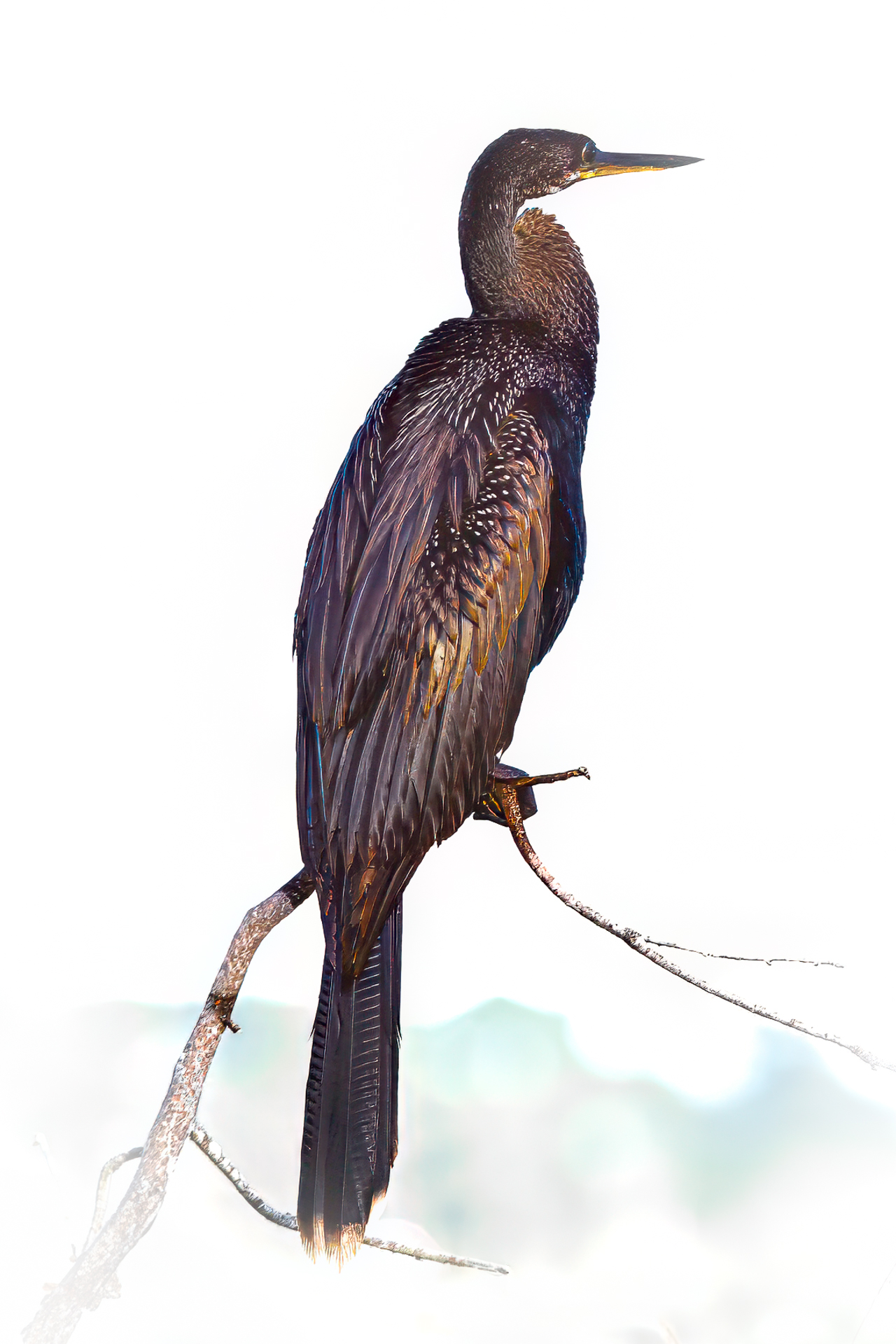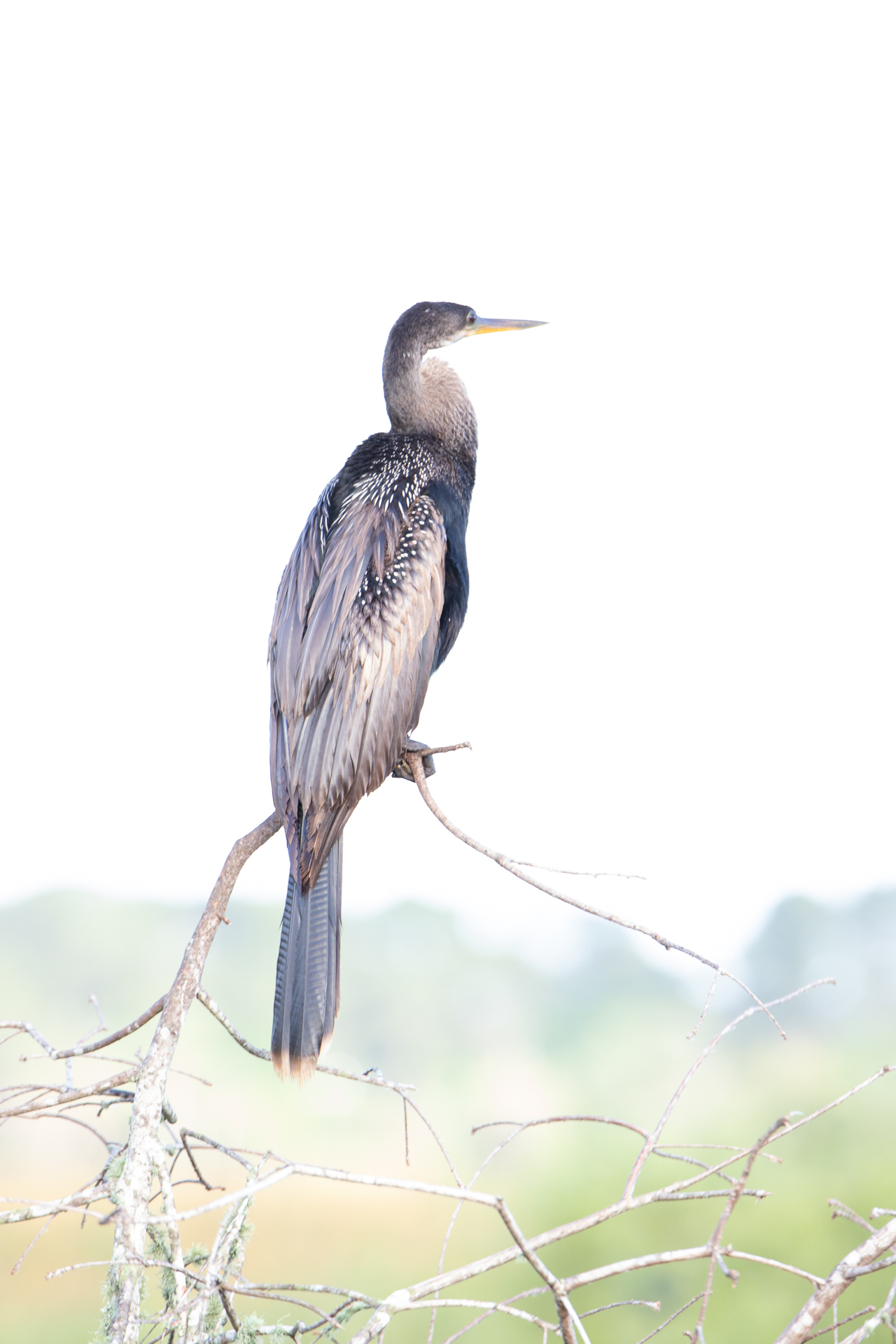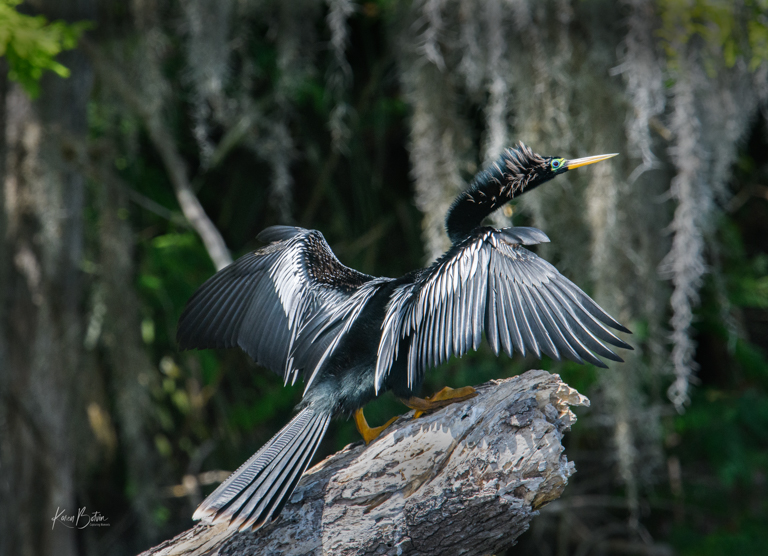Jim Wulpi
About the Image(s)
Since I winter in SW Florida, I'm very familiar with these waterbirds knows as Anhinga. They have the nickname of "snakebird" due to their ability to swim partially submerged with only their long necks and head with a dagger-like beak above the water. When they go after a fish, they dive underwater and "spear" the fish with their bill. On the surface, they throw the fish up in the air a few times in order to orient the fish into a head-first position to enable them to swallow it. Another interesting feature of these waterbirds is that their feathers are not oiled. Therefore, before they are able to fly, they must perch for a while and spread their wings to dry.
For this image, I was at a local Marsh looking for Sandhill Cranes and their chicks ("Colts"). I saw this Anhinga perched on a dead tree and nearly walked right past it (since they're so common). I reluctantly raised the camera and took a few frames. The sky was an overcast gray, and the image was horribly overexposed by about 1 1/2 stops. I went on to process most of the other images I took that day, then, reluctantly, came back to the Anhinga images. I was amazed at how I could recover the essence of the image by playing around with it and finally running it through Topaz Photo AI.
I think it now looks like it could be featured in a John James Audubon Book.
Your thoughts?
Tech stuff: Canon 6DMkII 1/100 sec; f9; ISO 640; Tamron 150-600 f5.6-6.3 DI VC USD G2 (AO22) at 450mm
5 comments posted
It's curious about the Anhingas and the Cormorants. Despite the fact that they are close cousins, the cormorants feathers are oiled enough to allow them to fly immediately after being in the water. Their beaks are different and their fish -catching style is different.
Posted: 05/02/2025 20:45:48
In my description of this image, I neglected to include the fact that this is a female.
They have quite a bit of brown - especially the neck area during breeding season, which is when this image was taken. Posted: 05/08/2025 12:00:05


